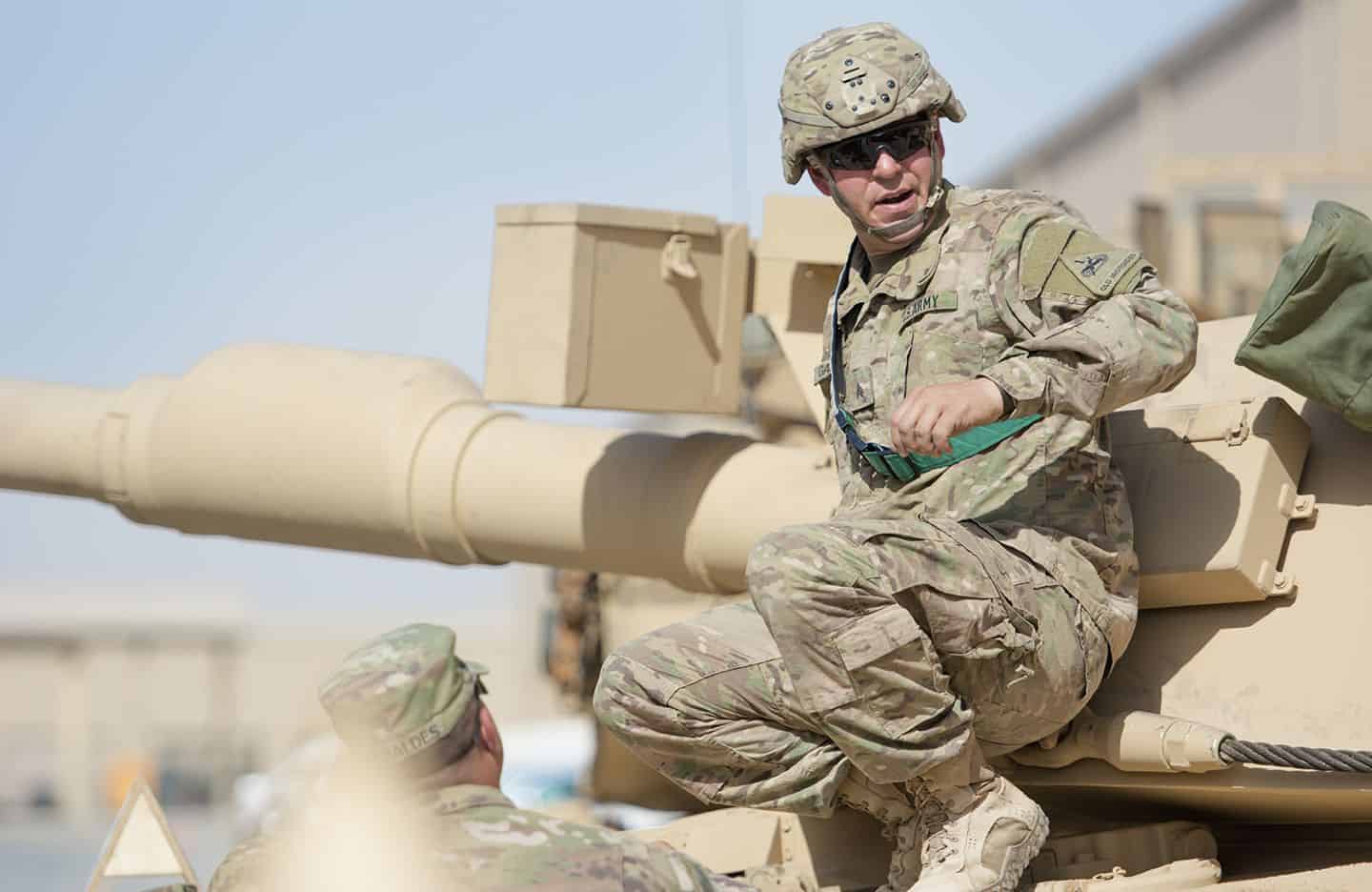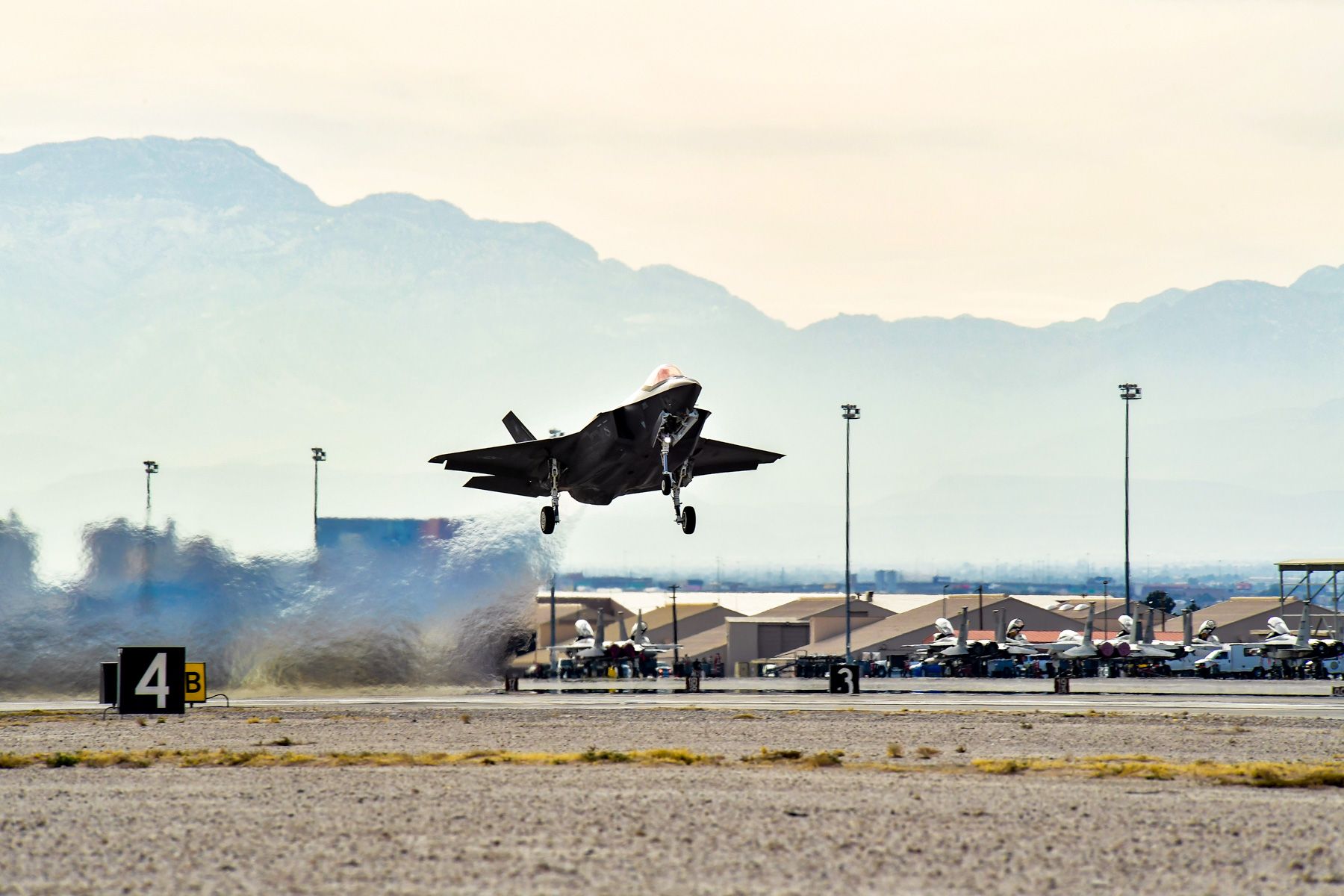CAMP ARIFJAN, Kuwait: The 401st Army Field Support Brigade issued 257 pieces of equipment from an Army Prepositioned Stocks-5 armored brigade combat team set during an issue exercise here, Jan. 27.
The exercise, led by the Army Field Support Battalion-Kuwait, was intended to test the battalion’s ability to rapidly issue newly combat configured equipment and test the overall functionality of combat configuration concepts.
“It went tremendously well and proved to be a valuable exercise,” said Lt. Col. Mike Jordan, commander, Army Field Support Battalion-Kuwait.
Soldiers with the 1st Battalion, 37th Armor Regiment, 2nd ABCT, 1st Armored Division acted as the gaining tactical unit for the exercise.
“We were able to help identify some things for the APS-5 team and for our team as well,” said Lt. Col. Jeff Kutter, commander, 47th Brigade Support Battalion, 2nd ABCT, 1st Armored Division. “There’s a lot of muscle memory and refreshers in an exercise like this that benefit our Soldiers. The teamwork here puts everyone in position to gain information, and that’s how we reach success.”
Partnering specifically with an armor unit was a priority for 401st AFSB leadership from the earliest stage of planning the exercise, said Jordan.
“We were fortunate to team up with a unit from an ABCT that is very familiar with the equipment to help us assess our readiness and our configuration,” Jordan said. “I think that’s valuable not only for APS programs, but also for the Army as we continue to bolster our power projection platforms.”
One of the basic tenants of the combat configuration concept is the ability to prepare any equipment set for issue within 96 hours.
AFSBn-Kuwait leadership notified the contracted support element, URS, with the task order to issue 17 vehicles — totaling 257 pieces of equipment — only 96 hours before the scheduled issue in an effort to realistically test the process of assembling various platforms for delivery to the warfighter.
“The timeline was essential for us to see where we gained efficiencies by mounting all of the basic issue items, Soldier technologies and combat enablers on the platform to make sure we have this process down and right,” Jordan said.
A vehicle that is combat configured includes all of its corresponding basic initial issue, combat enablers, and Soldier technologies mounted on and inside the vehicle. The vehicle also contains high performance fluids and receives more frequent routine maintenance.
As a result, APS-5 vehicles are maintained at a higher state of readiness and require less movement and fewer man hours throughout the process of issuing large equipment sets to gaining tactical units.
“We were able to provide the gaining tactical unit with critical combat equipment that was ready to fight,” Jordan said. “That’s a huge accomplishment for this team. It’s a huge accomplishment for Army logisticians who have dedicated their careers to delivering materiel readiness to the warfighter.”
Part of the exercise’s success came in the form of challenges that arose during the issue process because they allowed the AFSBn-Kuwait to both affirm the team’s ability to make quick corrections and also modify some procedures moving forward, said Jordan.
“There are a couple key things we learned during this exercise,” he said. “The first thing is that the majority of our Soldiers and our operators have never seen basic issue items mounted on a platform in accordance with the technical manual.”
The exercise provided an opportunity for the AFSBn-Kuwait to show and teach Soldiers how equipment is supposed to be arranged on a platform. It also provided an opportunity for the gaining tactical unit to give feedback about the equipment based on combat experience.
“The feedback is seriously valuable information because in some instances it might not be best for the items to be stored in accordance with the technical manual for various safety or access reasons,” Jordan said. “So we can look at those things and we can modify how we store some of the basic issue items on these platforms to better support the warfighter’s needs.”
The second key takeaway from the exercise was that maintenance challenges are nearly inevitable, but APS-5’s maintenance experts proved they can overcome those challenges, said Jordan.
Maintenance challenges occurred primarily with the M1A2 Abrams Main Battle Tanks in the form of outer hub seal leaks and software errors.
“Fortunately for us, our team is extremely knowledgeable, and they are very swift,” Jordan said. “So we were able to fix those things on the spot within two hours so we could issue proper functioning combat power to the gaining tactical unit.”
When a fault on a vehicle is identified during the issue process, the contracted maintenance teams attempt to fix the fault within two hours. If a repair can’t be made within two hours, the vehicle is replaced with another of the same platform.
The speed at which a non-mission capable vehicle can be replaced with a fully functioning vehicle is greatly improved through combat configuration of APS-5 equipment sets.
“There’s no longer a need to slow the whole process to a crawl to go collect up all the Soldier technologies and combat enablers from different locations and assemble a new platform for a quick swap,” Jordan said. “That vehicle is ready, it’s located nearby, and we can perform the swap immediately. It’s the beauty of combat configuration.”
No vehicles were swapped out during the exercise.
The AFSBn-Kuwait workforce includes Soldiers and Department of the Army civilians who are maintenance experts and serve as contract officer representatives and quality assurance specialists.
These maintenance experts oversee the contracted maintenance teams to ensure APS-5 equipment is maintained in accordance with Army standards. They also participate in the issue process to help identify faults in the equipment and provide guidance to the APS-5 maintainers and the gaining tactical unit.
“Our Soldiers deserve to have the best equipment in the world without any degradation to readiness or functionality,” said. Don Mallette, logistics management specialist, AFSBn-Kuwait.
“Units would lose trust in the rapid equipment draw process if the equipment isn’t up to standard and fitted with the best combat enablers,” Mallette said. “It’s the best feeling for me to know that the equipment we issue to the warfighter is fully mission capable, ready to fight, and equipped to complete the mission and get these Soldiers back home to their families safely.”
Combat Configuration of APS equipment is a U.S. Army Sustainment Command priority for several APS sites across the globe. The 401st AFSB continues to transition more of APS-5’s equipment into combat configured sets.
Information gained by the 401st AFSB during this exercise will be shared with leadership at other APS sites as ASC continues to operationalize equipment sets to support combatant commanders’ operations and contingency plans, said Jordan.
“This concept provides the combatant commander with an enormous amount of flexibility as we navigate a series complex environments,” Jordan said.
“We’re in the business of providing readiness,” he said. “Combat configured platforms are more ready, plain and simple.”











